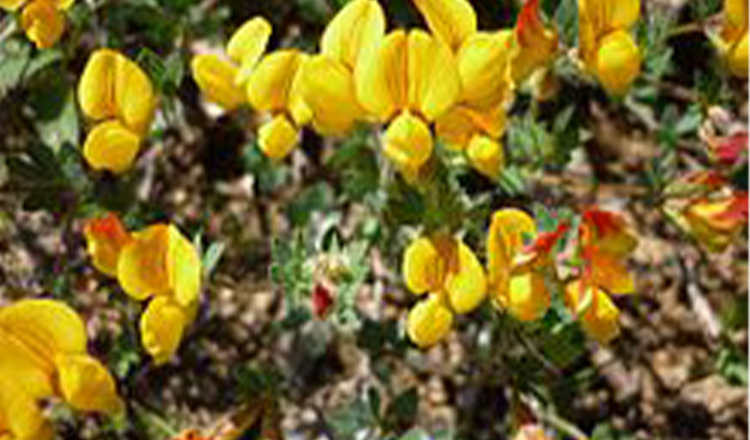Lotus (genus)

Lotus, a latinization of Greek lōtos (λωτός),[4] is a genus of flowering plants that includes most bird’s-foot trefoils (also known as bacon-and-eggs[5]) and deervetches[6] and contains many dozens of species distributed worldwide. Depending on the taxonomic authority, roughly between 70 and 150 are accepted. Lotus is a genus of legumes and its members are adapted to a wide range of habitats, from coastal environments to high altitudes.
The genus Lotus is currently undergoing extensive taxonomic revision. Species native to the Americas have been moved into other genera, such as Acmispon and Hosackia, as in the second edition of The Jepson Manual.
The aquatic plant commonly known as the Indian or sacred lotus is Nelumbo nucifera, a species not closely related to Lotus.
The genus Lotus is taxonomically complex. It has at times been divided into subgenera and split into segregate genera, but with no consistent consensus. P.H. Raven in 1971 is said to have been the first to suggest that the “New World” (American) and “Old World” (African and Eurasian) species did not belong in the same genus. A molecular phylogenetic study in 2000 based on nuclear ribosomal ITS sequences confirmed this view.[1] The New World species have been divided between the genera Hosackia s.str., Ottleya, Acmispon and Syrmatium. A 2006 study, primarily concerned with Old World Lotus species and hence with limited sampling of the American genera, found that they were all monophyletic. The study also supported the view that Dorycnium and Tetragonolobus are not distinct from Lotus at the generic level.[2] More species were added to the 2006 results in 2008, but did not alter the broad conclusions reached before. Clades were identified within Lotus s.str., some of which were significantly different from the sections into which the genus had been divided. However, resolution was incomplete. The results of the analysis were presented in terms of clades and complexes.[3]
